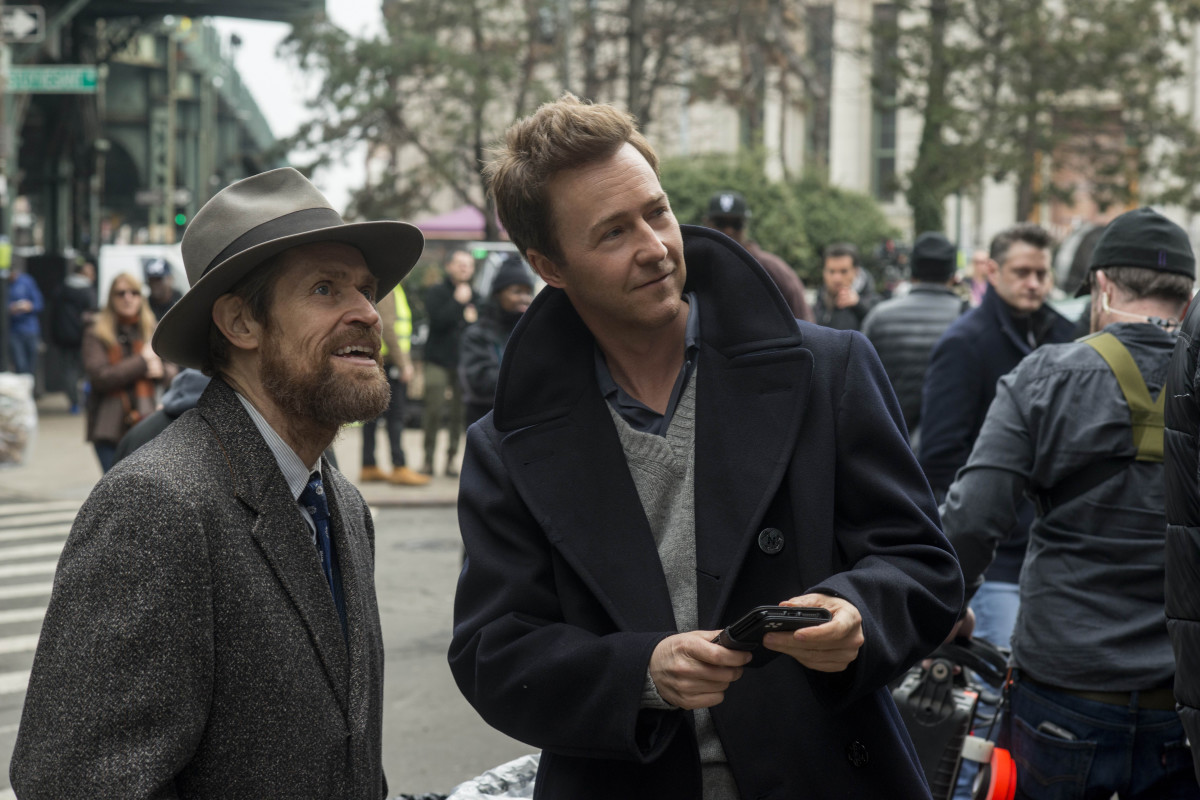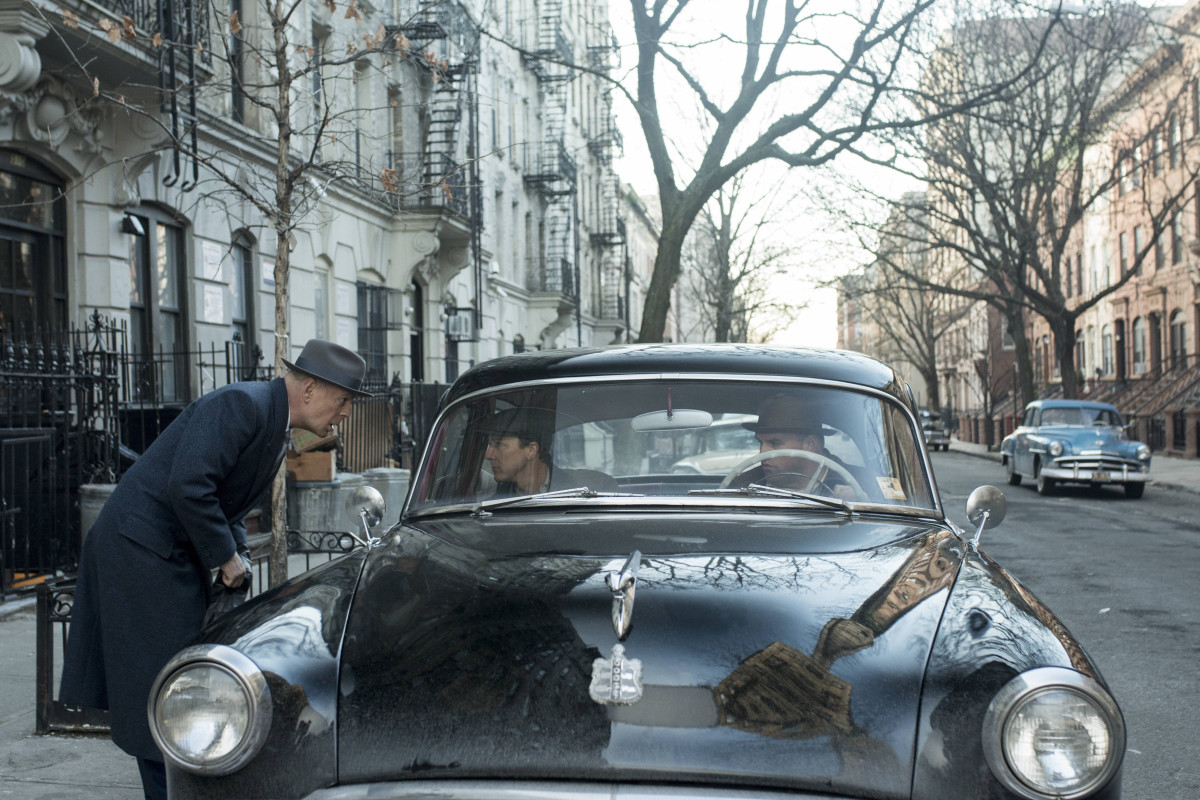Fight Club had just opened in theaters when Edward Norton first decided he wanted to make a movie out of Jonathan Lethem’s best-selling novel Motherless Brooklyn. But for numerous reasons, the most prominent being his demanding acting schedule, he was never able to make it happen. Now, two decades later, his adaptation is hitting the big screen and the actor believes the timing couldn’t have been better.
“I didn’t have the skillset needed to make this movie 20 years ago,” says Norton. Since then, he’s worked with some of the most respected directors in the world, including Spike Lee, Ridley Scott, and Wes Anderson. Not to mention a sizable Rolodex, which Norton used to fill up his cast with names like Bruce Willis, Alec Baldwin, Willem Dafoe, Fisher Stevens, Michael Kenneth Williams, and Bobby Cannavale.
The result is an epic, character-driven noir filled with an all-star cast. Men’s Journal reminisced with Norton about directing Motherless Brooklyn while playing its protagonist detective Lionel Essrog, the lessons of Fight Club, and running the New York City Marathon.

What first attracted you to the source material?
The first thing that I loved about the novel was the character, and that is what hooked me. I guess you could consider me a bit of a greedy actor. That was the impulse of a greedy actor, wanting to get his hands on such a great character, a detective living with Tourette Syndrome who is trying to solve the murder of his friend. I knew that it would be a wonderful challenge. I didn’t have any more idea than that. I knew that there were going to be elements of the novel that would be difficult to translate directly into a film. Because of how much time you spend in the guy’s head and with his condition. Being that film is a visual medium, there is a larger canvas that needs to be filled. I didn’t concern myself with that in the beginning.
How did you get into the mind of your character?
There are only a few of us that have to live with something like Tourette Syndrome. But I think that even though his condition is heightened, it is one that we can relate to because we all have arguments in our head. Perhaps one is the voice of reason telling you not to just sit on the couch, to go out and exercise. That is a battle that we are all having internally. In the book, it is described as a constant negotiation happening inside of his head. I also know that lots of people can relate to feeling lonely and isolated. So in a lot of ways, even though what Lionel goes through in Motherless Brooklyn is a heightened situation, there are a lot of elements that ring true to us all. The job of a private eye I also tried to make simple: It’s just asking questions. There is no real wizardry or anything there. It is just being relentless and asking questions.
What kind of research did you do into Tourette Syndrome?
There are a couple of great documentaries that I watched about people living with it. There is also a great book by Dr. Oliver Sacks. The documentaries were useful in observing what the physical outbursts looked like for some people, so that I had an idea of how it is for some people. That was helpful. I met with a few people as well. One of the things you learn is that it affects people in different ways and no two people are really the same. There were pieces that I took from the research, but I didn’t need to do anything of a recreation of one person’s experience, which gave me a lot of freedom. Learning is never the hard part—it’s the exciting part.
The novel was originally set in modern times, but you took it back to the classic film noir period. How’d you make that decision?
By the time I got around with it I had had the thought that even though it was written as a modern novel, it felt like it was happening in the 1950s. I asked the author [Jonathan Lethem] what he thought about that idea, because there was a lot about the way that he was treated that made me think of that time period. He was very open to that idea.

What did you like about shooting this film in New York City?
I have done about 10 films here in New York. I absolutely love it. The energy is just amazing. Doing period movies in the city can be challenging though, because of how conscious you have to be on where you are pointing the camera. I wanted a sense of scale. I wanted a car chase in the movie where I could see multiple blocks down the road while making sure that everything looked like it belonged. Doing the car chase in particular was difficult. It was fun to chase down parts of the city that are largely unchanged in their architecture.
Were there any locations that were particularly big wins for you?
There was a pool that Alec Baldwin was swimming in and shooting in the main room of the New York Public Library. There were people on this project that said we didn’t need to go to Pennsylvania Station, we could go anywhere, but it was something that I really wanted for the symbolism. There was a lot of effort to make these things work. Our project had one-third the shooting days and one-tenth the money of The Irishman. I couldn’t have done that 20 years ago. But there is such a sense of satisfaction now that I have done it.
How did you nail down your cast? You had worked with most of them before, but what made them right for these roles?
The casting process for me was really easy in my own mind. There were actors I knew had the qualities that the characters needed. That is how I felt about Bruce (Willis). My character’s boss is the coolest guy in the world, the older guy that you wish was your older brother. That is just Bruce. I also believe that Alec (Baldwin) is one of our great dramatic actors. I saw him on Broadway when I was in my 20s and he has a forcefulness that his character required.
This year is the 20th anniversary of Fight Club. What are your thoughts on that project looking back?
I believe the movie has held up. I think it still speaks to how people feel in the world about how things are operated and run in this world. Despite the fact that we did it before social media, and before anything like that existed. I know that there are a lot of people out there not feeling vital and not feeling their own vitality. That has almost become even more timely. I also think there is still the idea for some people that it can seem sexy to do something destructive and nihilistic. But that only lasts so long and you need to find your way back around from that into a being that is more productive and strong. One of the the things that I loved about doing Fight Club is that in the end he wants the narrator to stop—he knew that they were going too far. He never wanted to them to hurt anybody or destroy that much, which is why he holds hands with the girl at the end and says that he’s going to be okay. Fight Club is about a journey into maturity in a way.
Do you get surprised at how much attention you and Brad still get for your physical transformations?
There was a lot that we did to get ready for those roles, but the point of that wasn’t to train or look like we knew what we were doing really. The fighting in Fight Club was always supposed to be messy. Our characters weren’t necessarily supposed to be Brazilian Jiu-Jitsu experts—they were brawlers who just ran at each other and unleashed. So that is what we wanted to look like, and clearly we wanted to portray a physicality for both sides of him.
I think the last time I spoke to you was a full decade ago, as you were preparing to do the New York Marathon with your organization and the Maasai you brought from Kenya after training with them. Do you look back on that day much?
The marathon had been rattling around in my head for awhile before I did it and I am so glad that I did. There is such a sense of bliss that hits you when you cross that finish line and are doing it while you are still running strong. I would love to run another one, but with the movie-making there just absolutely wasn’t the time to do it properly. I still want to do another one. Our organization still brings over the young Masaai warriors which I am so glad to be involved with. I still run most days. I love running in this city.
from Men's Journal https://ift.tt/336ns3T
No comments:
Post a Comment